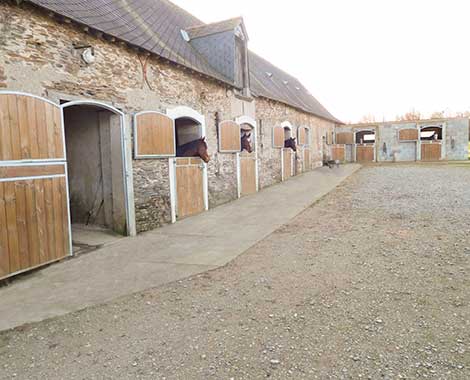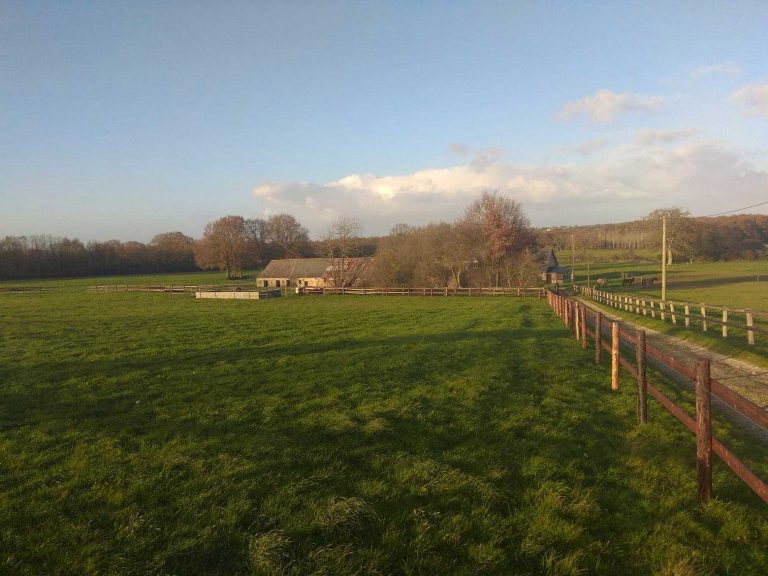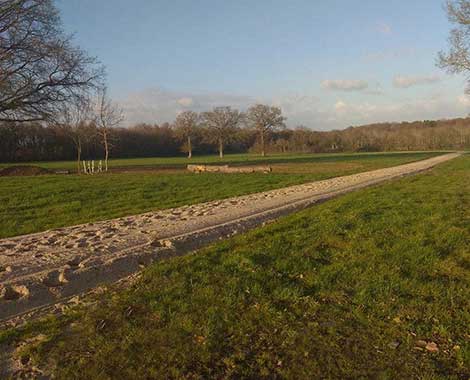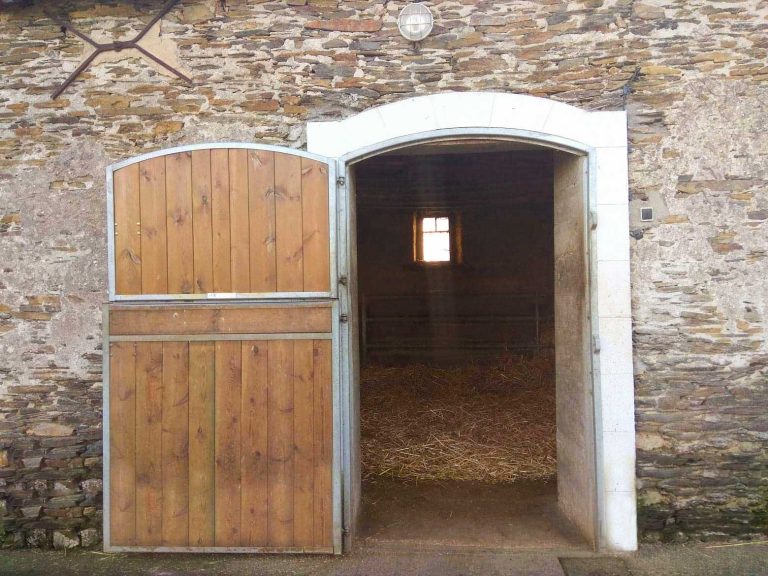Specialist in breaking in and pre-training of young thoroughbred horses, Vincent Thaunay also ensures the sale and transportation but also the care of your horse throughout its stay at the Écuries les Vieillères, in Maine et Loire and Mayenne.
« Installed since 1992, I try to give back, to their owners or trainers, horses available, confident and well in their head, but also who work in the right way without pulling. »
Our facilities at the "les Vieillères" Horse Stables
Spacious box
In a quiet setting, on a property of 10 hectares. Les Vieillères Horse stables offers your young horses spacious boxes with all the necessary facilities for comfort. Water fountain operated by the horse, mulching, spaces for hay.A sand track of 900 m
Practicable all year round, on a sloping ground, your young horses will be able to benefit from a breaking-in and a pre-training of quality.Shaded paddock
Les Vieillères horse stables have many shaded and spacious paddocks where your horses can relax.






Breaking-in young thoroughbred horses
The horse does not have the cognitive capacity that we have. Unlike us humans, the horse lacks the pre-frontal cortex, which allows reasoning or language for us. It is therefore imperative to understand how they learn and comprehend their environment. By thinking we are doing the right thing, we can teach them the exact opposite of what we want. For example, when we pet a horse that is camped out on the deck of a truck and refuses to climb, we think we are reassuring it, but we are actually reinforcing its desire not to get on board. The method is not the punishment either, because he would associate the boarding with something very unpleasant. The solution lies somewhere in between.
For each learning, and there are many, the horse must learn the signal, which corresponds to the response that we expect from him. For this, after each signal, we must make a slight pressure and increase it gradually, without becoming aggressive, until the horse finds the right answer, the horse learns by « trial and error ». Then comes the time of the reward. Quickly, the horse will become more available and calm because he understands what is expected of him.
On the other hand, the breaking-in must teach him not to react to certain things, which can frighten him at first. I am thinking of the strapping, the shower, the clippers, the farrier, the starting boxes, in short all things that are best shown to him before he is confronted with them.
In short, breaking-in consists of teaching the foal everything he needs to know to succeed as an athlete. It is up to us to adapt to his abilities.
Pre-training
After the breaking-in phase, it is time for the horse to follow a period of pre-training for races.
The pre-training period corresponds to the period during which the young horse, still a baby, will become a high level athlete. This period is essential to the development of a racehorse. It is a period of physical but also mental development for the horse. It is worked in 3 stages: Endurance, holding and speed.
This work consists of covering fairly long distances at a moderate pace. It is of course recommended to increase the distance as the weeks go by. The aim is to develop cardiac (volume) and pulmonary capacity. It is known that unlike humans, the limiting factor in effort is not the heart, for the horse, it is oversized for the effort. The limiting factor of the effort is the pulmonary capacity. It is therefore important to monitor the condition of the respiratory system. Endurance work must be done at a heart rate of around 175 to 200 beats per minute, not far from the anaerobic lactic threshold, i.e. at an intensity that exceeds the muscle oxygenation capacity.
The objective of this type of work is to develop the production of aerobic and anaerobic lactic energy in a joint manner, it is a determining phase of the physical preparation to acquire the « holding ». The speed of the work should require the horse to have a heart rate between 190 and 210 beats per minute. It is recommended that during a session, several series of 4 to 6 minutes, separated by a rest period of 2 minutes and ending with an active recovery of 10 minutes. Progressively during the successive sessions, we notice that at the same speed the heart rate decreases, proof that the physical condition of the horse is improving, if this is not the case we can wonder about an underlying pathology, which can be a joint problem, muscular, abscess in a foot…
Fees
BREAKING-IN 25 € HT / DAY
PRE-TRAINING 25 € HT / DAY
SALES PREPARATION 25 € HT / DAY
plus SALE DAY PACKAGE (for stay and travel)
PRE BOARDING 13 € HT / DAY
TRANSPORT FOR 2 HORSES 0,55 € HT / KM plus PEAGE
TRANSPORT FOR 3 OR 4 HORSES to be defined together
Visit Us
- Les Vieillères Saint-Sauveur-de-Flée
- vthaunay@sfr.fr
- +336 14 35 30 32
